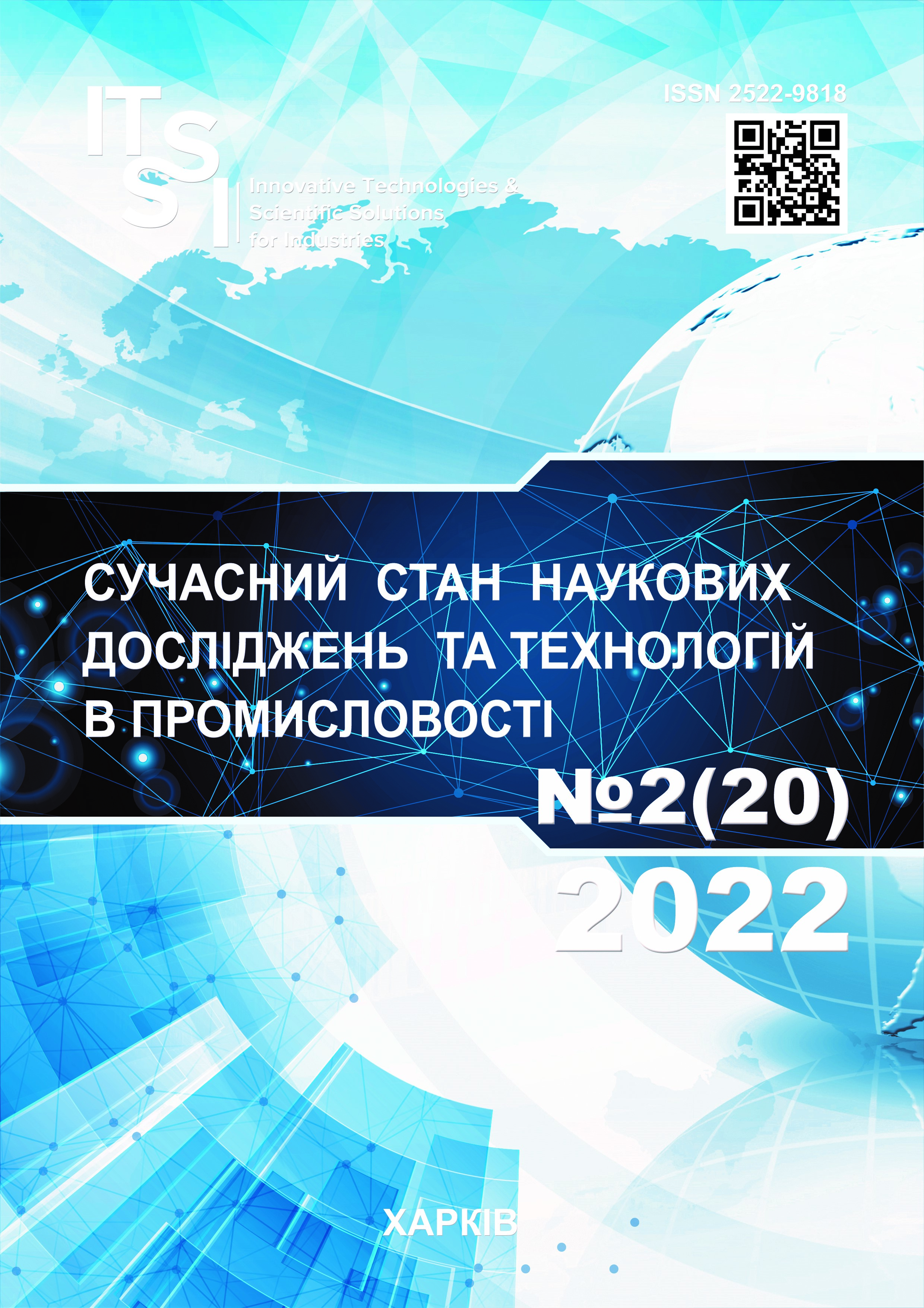INFORMATION MODELS FOR MANUFACTURING WORKSPACES IN ROBOTIC PROJECTS
DOI:
https://doi.org/10.30837/ITSSI.2022.20.097Keywords:
information model, workspace, mobile robot, flexible integrated systemAbstract
The subject of research in the article are the workspace models for flexible integrated robotic systems. The goal of the work is in development of information models to represent workspaces for following application in the automated control systems of flexible integrated manufacturing. The article solves the next tasks: to analyze the representation of workspace to decide practical problems of robotic systems of different nature, to consider the development of informational models for representation on workspaces of intelligent control systems of integrated manufacturing, to consider the practical examples of information presentation on workspaces of production systems. Research methods are set theory and predicate theory. The following results were obtained: there were analysed the main features of informational models development to solve robotic tasks of different nature and were pointed the limitations of existing approaches of formal description, the need of integration of workspace models to decision-support systems and systems of graphical and mathematical simulation of integrated systems; the set theory-based model of information representation for problem-solving processes of flexible integrated robotic systems is proposed; the information-logic model of workspace for mobile robot applications, functioning in flexible integrated systems. is developed and contains the list of objects, includes their geometrical dimensions and supplies the preservation of parameters in time and space; information presentation for automated control system of flexible integrated manufacturing, which implements proposed models, is considered. Conclusions: application of models of information type for automated control systems makes to supply logical unification of flexible integrated manufacturing elements, to provide monitoring of states of technological equipment of production systems in space and time and formation of their digital twins, to promote functioning of intelligent decision-support systems for robotic systems of different types, that improves characteristics of production control.
References
Skitsko, V. (2016), "Industry 4.0 as the industrial production of the future" ["Industriya 4.0 yak promyslove vyrobnytstvo maybutnʹoho"], Investment: practice and experience, Vol. №5/20, P. 33–40.
Haslum, Patrik (2007), "Reducing Accidental Complexity in Planning Problems", Proceedings of the 20th International Joint Conference on Artificial Intelligence, Р. 1898–1903.
Tsarouchi, P., Spiliotopoulos, J., Michalos, G., Koukas, S., Athanasatos, A., Makris, S., Chryssolouris, G. (2016), "A Decision Making Framework for Human Robot Collaborative Workplace Generation", Procedia CIRP, Vol. 44, Р. 228–232. DOI:https://doi.org/10.1016/j.procir.2016.02.103.
Chen, M., Nikolaidis, S., Soh, H., Hsu, D., & Srinivasa, S. (2020), "Trust-aware decision making for human-robot collaboration: Model learning and planning", ACM Transactions on Human-Robot Interaction (THRI), 9 (2), Р. 1–23. DOI:https://doi.org/10.48550/arXiv.1801.04099.
Upadhyay, J., Rawat, A., Deb, D., Muresan, V., Unguresan, M.-L. (2020), "An RSSI-Based Localization, Path Planning and Computer Vision-Based Decision Making Robotic System", Electronics, 9, Р. 1326. DOI: https://doi.org/10.3390/electronics9081326.
Crosby, M., Rovida, F., Pedersen, M.- Rath, Petrick, Ronald P. A., Krüger, Volker (2016), "Planning for Robots with Skills", Proceedings of the 4th Workshop on Planning and Robotics (PlanRob), ICAPS, Р. 49–57.
Paulius, D., & Sun, Y. (2019), "A Survey of Knowledge Representation in Service Robotics", Robotics Auton. Syst., 118, Р. 13–30.
Tsymbal, A., Bronnikov, A., Yerokhin, A. (2019), "Adaptive Decision-making for Robotic adaptive tasks", Proceedings of IEEE 8th International Conference on Advanced Optoelectronics and Lasers (CAOL), Sozopol, Bulgaria, 6–8 Sept., Р. 594–597, DOI: https://doi:10.1109/CAOL46282.2019.9019488.
Tsymbal, O., Mercorelli, P., Sergiyenko, O. (2021), "Predicate-Based Model of Problem-Solving for Robotic Actions Planning", Mathematics, 9 (23), Р. 3044.
Tsymbal, O. M., Bronnikov, A. I., Kutsenko, O. I., Shein, E. S. (2014), "The concept of intelligent production agents and features of its implementation" ["Kontseptsiya intelektualʹnykh vyrobnychykh ahentiv ta osoblyvosti yiyi realizatsiyi"], Eastern European Journal of Advanced Technologies, Kharkov, No. 1/2 (67), P. 9–13.
Honjwei, M., Longlong, M. (2012),"Robot Path Planning Based on Differential Evolution in Static Environment", International Journal of Digital Content Technology and its Applications (JDCTA), Vol. 6, No. 20, Р. 122–129.
Khor, A., Yong, A. (2018), "Robotics in Supply chain, in: L. Huan, S. Raman (Eds.), Emerging Trends of Technologies in Supply Chain Management", WOU Press, Р. 25–38.
Mikhailov, E.; Remenyuk, B. (2015), "Optimize the placement warehouse transport system", J. Electrotech. Comput. Syst., 18, Р. 60–64.
Sergiyenko, O., Flores-Fuentes, W., Mercorelli, P, Eds. (2019),"Machine Vision and Navigation", Springer, Berlin/Heidelberg, Germany, 12 November; Р. 851.
Sergiyenko, O. Y.; Tyrsa, V. V. (2021), "3D Optical Machine Vision Sensors With Intelligent Data Management for Robotic Swarm Navigation Improvement", IEEE Sens., J., 21, Р. 11262–11274.
Downloads
Published
How to Cite
Issue
Section
License

This work is licensed under a Creative Commons Attribution-NonCommercial-ShareAlike 4.0 International License.
Our journal abides by the Creative Commons copyright rights and permissions for open access journals.
Authors who publish with this journal agree to the following terms:
Authors hold the copyright without restrictions and grant the journal right of first publication with the work simultaneously licensed under a Creative Commons Attribution-NonCommercial-ShareAlike 4.0 International License (CC BY-NC-SA 4.0) that allows others to share the work with an acknowledgment of the work's authorship and initial publication in this journal.
Authors are able to enter into separate, additional contractual arrangements for the non-commercial and non-exclusive distribution of the journal's published version of the work (e.g., post it to an institutional repository or publish it in a book), with an acknowledgment of its initial publication in this journal.
Authors are permitted and encouraged to post their published work online (e.g., in institutional repositories or on their website) as it can lead to productive exchanges, as well as earlier and greater citation of published work.














